
Think Again: Are Education Programs for High Achievers Inherently Inequitable?
This brief challenges the notion that marginalized students of high ability are harmed by advanced education, with implications for better screening measures and expansion of programs.
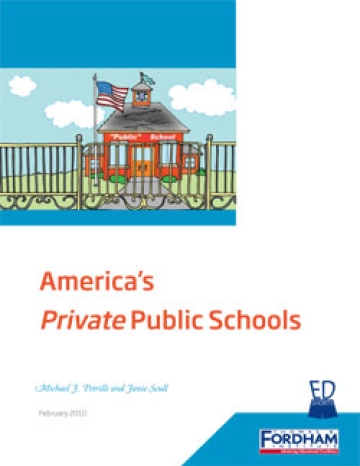
America's Private Public Schools
More than 1.7 million American children attend what we've dubbed "private public schools"—public schools that serve virtually no poor students. In some metropolitan areas, as many as one in six public-school students—and one in four white youngsters—attends such schools, of which the U.S. has about 2,800.
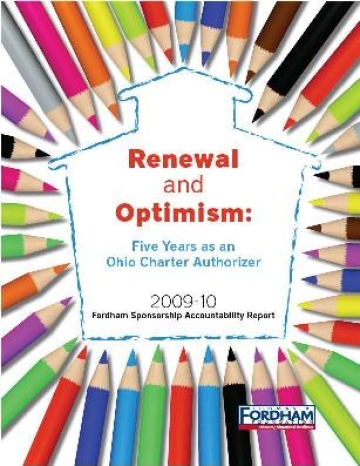
Renewal and Optimism: Five Years as an Ohio Charter Authorizer
The Thomas B. Fordham Foundation is pleased to share our 2009-10 Sponsorship Accountability Report. The report, Renewal and Optimism: Five Years as an Ohio Charter Authorizer, contains a year in review for Ohio's charter school program, detailed information on the Fordham Foundation's work as a charter school sponsor, and data on the performance of our sponsored schools during that year.
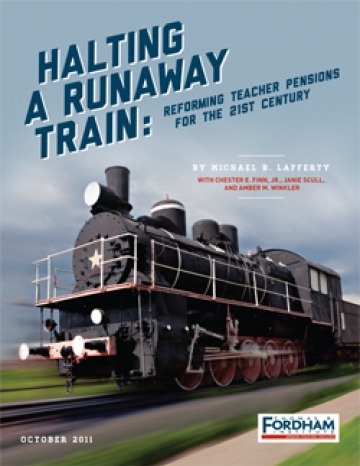
Halting a Runaway Train: Reforming Teacher Pensions for the 21st Century
When it comes to public-sector pensions, writes lead author Mike Lafferty in this report, "A major public-policy (and public-finance) problem has been defined and measured, debated and deliberated, but not yet solved. Except where it has been." As recounted in "Halting a Runaway Train: Reforming Teacher Pensions for the 21st Century," these exceptions turn out to be revealing—and encouraging. As leaders around the country struggle to overhaul America's controversial and precarious public-sector pensions, this study draws on examples from diverse fields to provide a primer on successful pension reform. Download to find valuable lessons for policymakers, workers, and taxpayers looking for timely solutions to a dire problem.
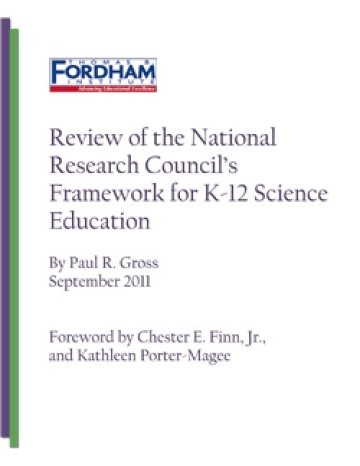
Review of the National Research Council's Framework for K-12 Science Education
Representatives from twenty states are hard at work developing Next Generation Science Standards—and using as their starting point the National Research Council's recently released Framework for K-12 Science Education. This review of that framework, by Paul R. Gross, applauds its content but warns that it could wind up sending standards writers off track. This appraisal find much to praise in the Framework but also raises important concerns about a document that may significantly shape K-12 science education in the U.S. for years to come. Download to learn more.
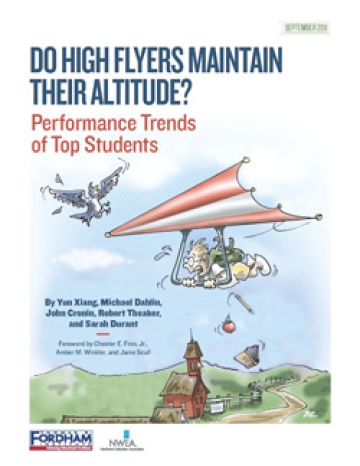
Do High Flyers Maintain Their Altitude? Performance Trends of Top Students
"Do High Flyers Maintain Their Altitude? Performance Trends of Top Students," is the first study to examine the performance of America's highest-achieving children over time at the individual-student level. Produced in partnership with the Northwest Evaluation Association, it finds that many high-achieving students struggle to maintain their elite performance over the years and often fail to improve their reading ability at the same rate as their average and below-average classmates. The study raises troubling questions: Is our obsession with closing achievement gaps and "leaving no child behind" coming at the expense of our "talented tenth" and America's future international competitiveness? Read on to learn more.
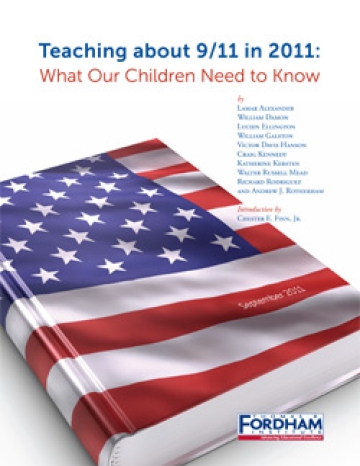
Teaching about 9/11 in 2011: What Our Children Need to Know
Any number of organizations are offering advice about what to teach schoolchildren about the events of September 11, 2001, yet (unlike that day's murderous pilots) most sorely miss the mark. Fordham's publication, "Teaching about 9/11 in 2011: What Our Children Need to Know," highlights the danger of slighting history and patriotism in the rush to teach children about tolerance and multiculturalism. It combines ten short essays by distinguished educators, scholars, and public officials from our 2003 report, "Terrorists, Despots, and Democracy: What Our Children Need to Know," essays that feel more timely than ever, and includes a new introduction by Chester E. Finn, Jr. reflecting on how the lessons of these essays apply today.
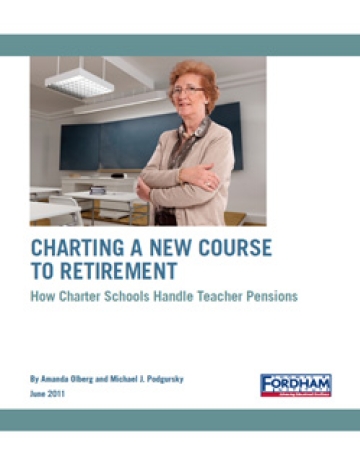
Charting a New Course to Retirement: How Charter Schools Handle Teacher Pensions
In this "Ed Short" from the Thomas B. Fordham Institute, Amanda Olberg and Michael Podgursky examine how public charter schools handle pensions for their teachers. Some states give these schools the freedom to opt out of the traditional teacher-pension system; when given that option, how many charter schools take it? Olberg and Podgursky examine data from six charter-heavy states and find that charter participation rates in traditional pension systems vary greatly from state to state. When charter schools do not participate in state systems, they most often provide their teachers with defined-contribution plans (401(k) or 403(b)). But some opt-out charters offer no alternative retirement plans at all for their teachers. Read on to learn more.
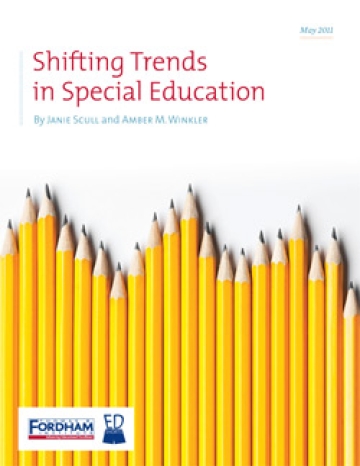
Shifting Trends in Special Education
In this Fordham Institute paper, analysts examine public data and find that the proportion of students with disabilities peaked in 2004-05 and has been declining since. At the state level, Rhode Island, New York, and Massachusetts have the highest rates of disability identification, while Texas, Idaho, and Colorado have the lowest. Read on to learn more.
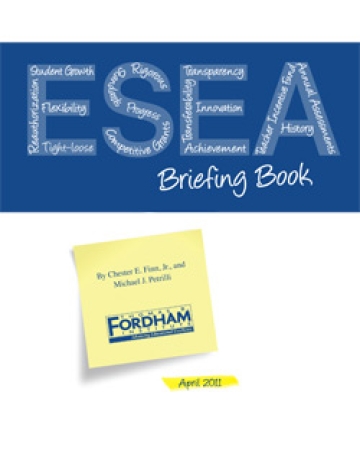
ESEA Briefing Book
Political leaders hope to act soon to renew and fix the Elementary and Secondary Education Act (ESEA, also known as No Child Left Behind). In this important paper, Thomas B. Fordham Institute President Chester E. Finn, Jr. and Executive Vice President Michael J. Petrilli identify 10 big issues that must be resolved in order to get a bill across the finish line, and explore the major options under consideration for each one. Should states be required to adopt academic standards tied to college and career readiness? Should the new law provide greater flexibility to states and districts? These are just a few of the areas discussed. Finn and Petrilli also present their own bold yet "reform realist" solutions for ESEA. Read on to learn more.
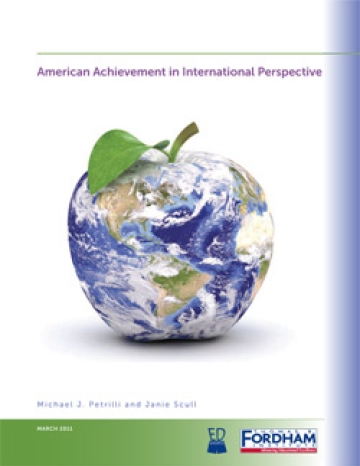
American Achievement in International Perspective
The latest results of the Programme for International Student Assessment (PISA) garnered all the usual headlines about America's lackluster performance and the rise of competitor nations. And to be sure, the findings that America's 15-year-olds perform in the middle of the pack in both reading and math are disconcerting for a nation that considers itself an international leader, priding itself on its home-grown innovation, intellect, and opportunity. But that's not the entire story. Read on to learn more.
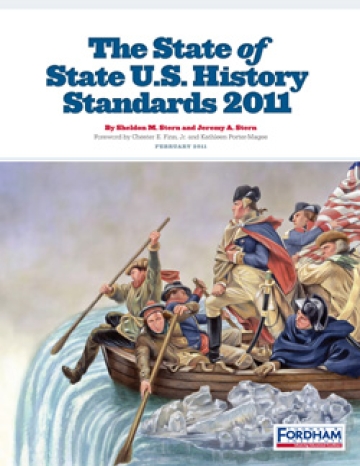
The State of State U.S. History Standards 2011
Reviewers evaluated state standards for U.S. history in grades K-12. What they found is discouraging: Twenty-eight states—a majority—deserve D or F grades for their academic standards in this key subject. The average grade across all states is a dismal D. Among the few bright spots, South Carolina earns a straight A for its standards and six other jurisdictions—Alabama, California, Indiana, Massachusetts, New York and the District of Columbia—garner A-minuses. (The National Assessment's "framework" for U.S. history also fares well.) Read on to learn how your state scored.

Stretching the School Dollar
This policy brief lists fifteen concrete ways that states can "stretch the school dollar" in these difficult financial times. It is written by Marguerite Roza, senior data and economics advisor at the Bill & Melinda Gates Foundation and Michael J. Petrilli, executive vice president at the Fordham Institute.